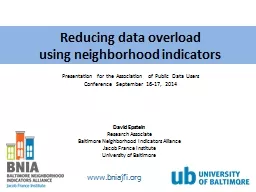PPT-Reducing the collection of
Author : tatiana-dople | Published Date : 2015-09-18
itemsets alternative representations and combinatorial problems Too many frequent itemsets If a 1 a 100 is a frequent itemset then there are 12710 30
Presentation Embed Code
Download Presentation
Download Presentation The PPT/PDF document "Reducing the collection of" is the property of its rightful owner. Permission is granted to download and print the materials on this website for personal, non-commercial use only, and to display it on your personal computer provided you do not modify the materials and that you retain all copyright notices contained in the materials. By downloading content from our website, you accept the terms of this agreement.
Reducing the collection of: Transcript
Download Rules Of Document
"Reducing the collection of"The content belongs to its owner. You may download and print it for personal use, without modification, and keep all copyright notices. By downloading, you agree to these terms.
Related Documents














